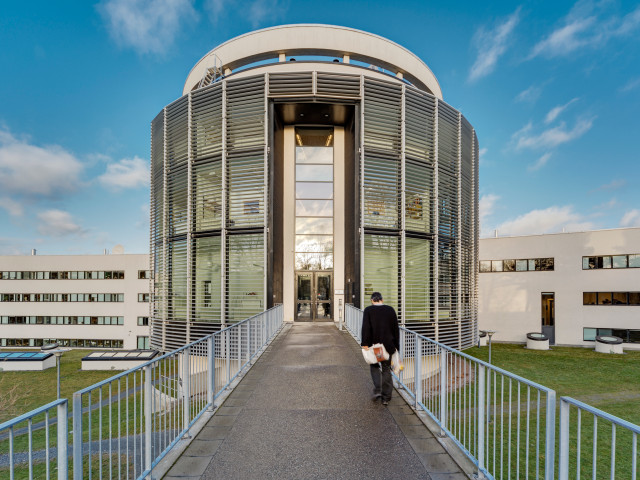The course will through a selected set of examples introduce and motivate a need for a detailed physical and chemical description of surfaces on the atomic/molecular level. This includes basic surface phenomena such as adsorption, desorption, chemical bonds and chemical reactions, thin film growth and their dependence on atomic and electronic surface structure, temperature, pressure and environment.
A set of experimental surface/interface preparation and analysis methods for determination of electronic and atomic structure will be presented and described, with the aim to provide the student with a “tool-box”. This box includes advanced electron and X-ray spectroscopy, electron spectroscopy, surface diffraction, synchrotron radiation and atomically resolved microscopy.
The course encompasses lectures, mini-conferences with student presentations, lab-work and a visit at the Swedish National Synchrotron Radiation Laboratory MAXLAB
IM2667 Physics and Chemistry of Surfaces 7.5 credits
This course has been discontinued.
Last planned examination: Autumn 2020
Decision to discontinue this course:
No information inserted
Content and learning outcomes
Course contents
Intended learning outcomes
Materials and their properties play a key role in todays society and technology; electronic devices and machines, catalytic reformation of chemicals, corrosion inhibition and protection, energy conversion, nanotechnology, construction materials. In many of those areas surface or interface effects are more or less important. In particular in nanotechnology it is often only the surface that is left.
After the course the students should be able to:
1) Analyze data from the methods presented in the course and calculate binding energies, charge transfer, electrical and optical properties, chemical composition and atomic structure. The analysis is not intended to include advanced computer based modeling.
2) Explain and judge relevant information from published research papers in surface science.
3) Select/suggest the proper set of experimental methods to determine the electronic and atomic structure, chemical composition and chemical bond strength for a given surface/interface system.
4) Describe the basic principles, surface specificity, advantages and limitations of the spectroscopic and microscopic methods presented in the course.
5) Judge the importance of surface effects on some technological areas, based on a physical description of those systems.
6) Describe and estimate how lattice structure and chemical bond influences on interface structure and surface reactions.
7) Describe the physical and chemical difference between a surface and the bulk of a material and how this depends on the type of bond in the material.
Literature and preparations
Specific prerequisites
Solid State Physics
Recommended prerequisites
Equipment
Literature
“Lectures in Surface Science, with examples and solutions” M. Göthelid
“Introduction to Surface, interfaces and thin films”, H. Lüth, Springer Verlag
Selected overview papers on specific topics (indicated at each lecture and handed out in the beginning of the course)
Examination and completion
If the course is discontinued, students may request to be examined during the following two academic years.
Grading scale
Examination
- LAB1 - Lab Work, 1.5 credits, grading scale: P, F
- TEN1 - Examination, 6.0 credits, grading scale: A, B, C, D, E, FX, F
Based on recommendation from KTH’s coordinator for disabilities, the examiner will decide how to adapt an examination for students with documented disability.
The examiner may apply another examination format when re-examining individual students.
Lab-work (1.5p)
The course is examined by a home-exam that is handed out at the first lecture. It contains problems from all parts of the course. Each problem is “multi-leveled” where each level requires different levels of understanding/problem solving abilities.
Opportunity to complete the requirements via supplementary examination
Opportunity to raise an approved grade via renewed examination
Examiner
Ethical approach
- All members of a group are responsible for the group's work.
- In any assessment, every student shall honestly disclose any help received and sources used.
- In an oral assessment, every student shall be able to present and answer questions about the entire assignment and solution.
Further information
Course room in Canvas
Offered by
Main field of study
Education cycle
Add-on studies
Supplementary information
The course is replaced by SK2762 as from autumn term 2017.